Viking Blog
Viking Outfit: 7 Iconic Looks from the Warriors of the North
The Vikings were expert sailors and fierce warriors. They left a lasting legacy. Their distinctive style, particularly their outfits, became an iconic symbol of their history. Viking attire reflected their environment and society. It also served practical purposes in battle and daily life. This article explores 7 iconic Viking outfits. It showcases their craft, cultural significance, and adaptability to harsh Nordic conditions.
1. Viking Warrior Tunic
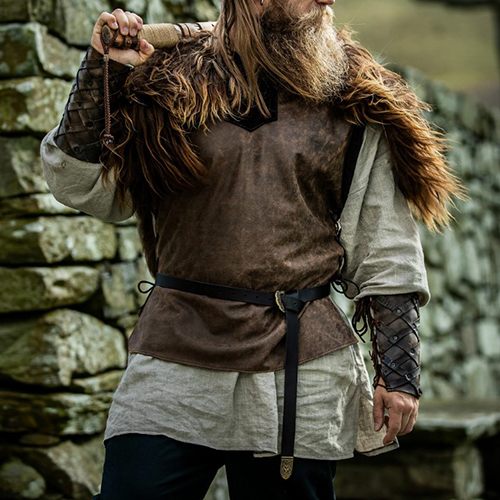
The tunic stands out as the most recognizable Viking garment, worn by both men and women. The tunic, made of wool, linen, or animal hides, was a key garment. It provided comfort and warmth. Viking warriors wore knee-length, loose tunics for easy movement in battle. The tunic’s intricate embroidery and patterns had two purposes. They were decorative and a sign of social status. Sleeves varied in length. A brooch or clasp fastened them at the collar. This detail was both functional and decorative. The tunic’s versatility made it suitable for many activities. These included farming, crafting, raiding, and warfare.
2. Viking Outfit: Cloak (Pelt or Fur Cloak)
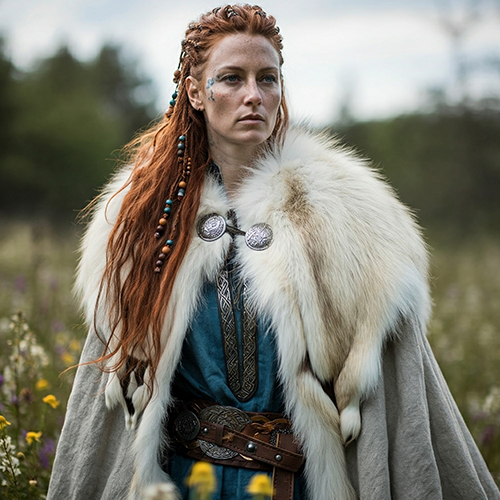
In the harsh northern climates, warmth was vital. So, the Viking cloak was essential to their attire. Craftsmen made these cloaks from animal pelts or furs. They were usually draped over the shoulders and secured at the neck with a large brooch or fibula. The cloak had two purposes. It provided warmth and showed wealth. The quality of the fur or pelt indicated the wearer’s social status. Cloak lengths and styles varied. But, they were vital to a Viking’s winter wardrobe and long sea voyages. Popular furs included wolf, bear, and fox, with rarer furs like sable and marten reserved for the elite.
3. Viking Helmet
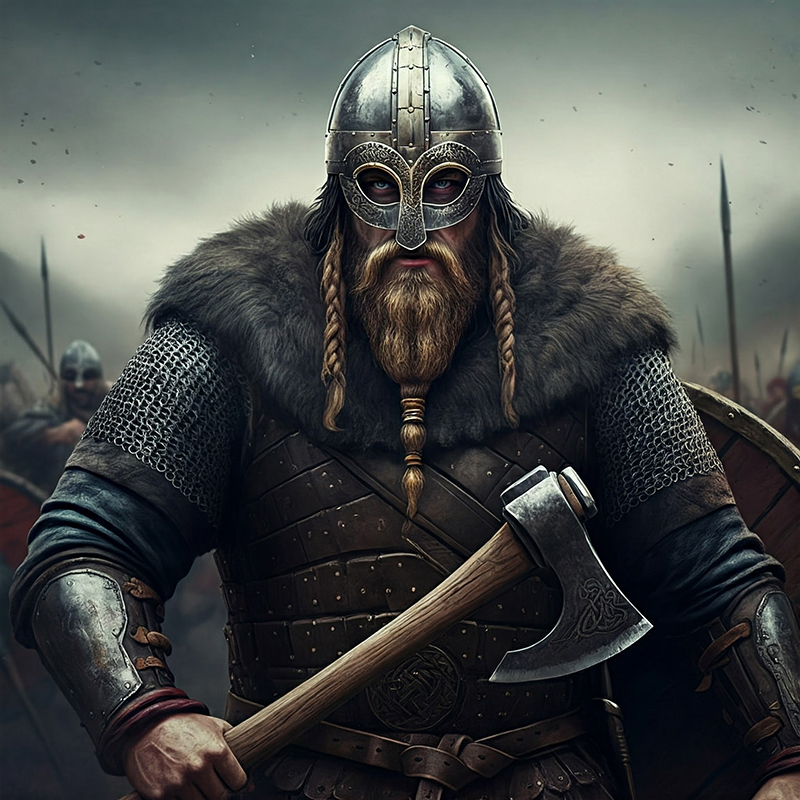
Many people consider the Viking helmet one of the most iconic symbols of Viking warriors. Viking helmets did not have horns. This is a later myth. Craftsmen made authentic Viking helmets of iron. They had a simple, rounded design, often with a nose guard for added protection. These helmets aimed for practicality in battle. They protected while maximizing visibility and movement. Helmets were often paired with chainmail coifs. They are a type of armor worn over the head and neck for extra protection. The Viking helmet showed a warrior’s readiness for battle. It was a key part of their battle gear. Most helmets were iron. Some high-ranking warriors had helmets with bronze or silver details.
4. Viking Shield and Sword Belt
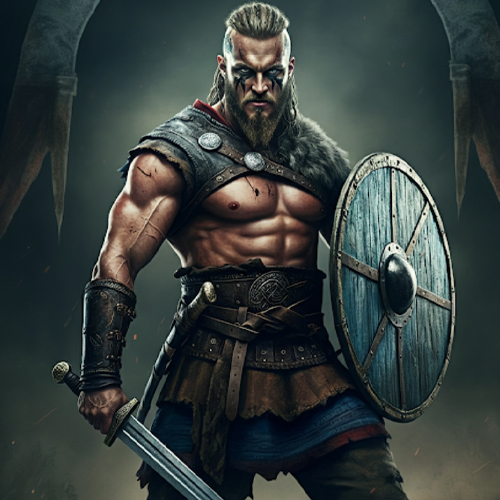
Though not clothing, the Viking shield and sword belt were vital for any warrior. The shield was round and constructed from wood. It was often reinforced with metal or leather for strength. Shields were often painted with bold designs. They symbolized the warrior’s family, clan, or achievements. The wearer donned the sword belt (or scabbard) at the waist. It kept the warrior’s sword within easy reach. Vikings often decorated these weapons and accessories with metalwork. It showed their importance in society. The sword belt’s fine leather and silver might show the warrior’s status and wealth.
5. Viking Outfit: Breeches and Trousers
Viking men wore breeches or trousers under their tunics. They were usually made of wool, linen, or leather. These garments provided warmth and comfort, especially when combined with boots or sandals. Viking breeches were often tight around the legs. This helped with movement when riding horses or fighting. The trousers were usually held up by a leather belt. It could also hold tools, knives, or pouches for essentials. People prized these garments for their fit, durability, and function. They suited the active Viking lifestyle. There were different styles of breeches. Some had wrappings around the lower leg for warmth and protection.
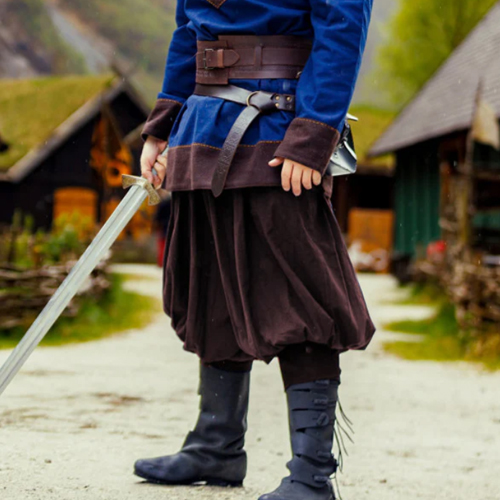
6. Viking Boots or Shoes
Viking footwear was vital to their attire. It mattered due to their long journeys and tough terrains. Craftsmen made Viking boots from leather or animal hides. They were sturdy, comfortable, and water-resistant. The boots often reached below the knee. They provided support during long sea voyages or treks across rugged lands. Viking boots often had studded or nailed soles for better grip on slick surfaces. These boots were practical, robust, and essential for navigating the demanding Viking lifestyle. Shoes, while less common than boots, were also worn, particularly for everyday activities.
7. Viking Jewelry and Accessories
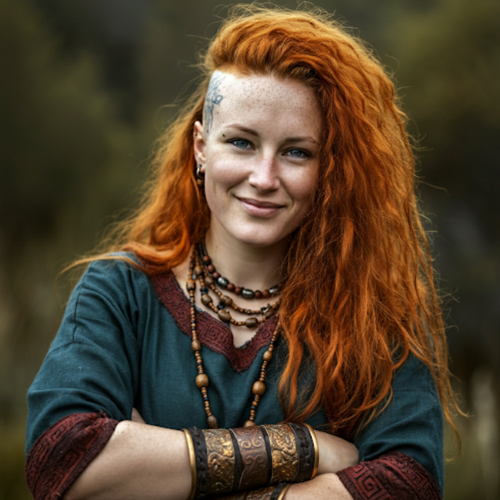
Viking outfits were often adorned with intricate jewelry and accessories. They had both practical and symbolic value. Both Viking men and women wore brooches, rings, arm rings, and necklaces. They were often made of silver, gold, or bronze. These pieces were more than decoration. They showed social status. Wealthier people had more elaborate designs. Brooches fastened cloaks or tunics for practical reasons. Arm rings were symbols of strength and status. Skilled Vikings crafted jewelry with important symbols. These included Thor’s hammer and a wolf’s head. They represented their beliefs and a connection to Norse mythology. The materials and design complexity showed the wearer’s wealth and status.
Conclusion
Viking outfits were a unique fusion of practicality, craftsmanship, and cultural symbolism. Each item served a purpose. The tunic and cloaks were functional. The helmet and jewelry were iconic. They also reflected the wearer’s social status and beliefs. The Vikings’ clothing and accessories suited their harsh environment and active, warrior lifestyle. They reflected their era and symbolized their cultural heritage. Viking outfits still captivate us. They show us the lives of these legendary Northerners.
